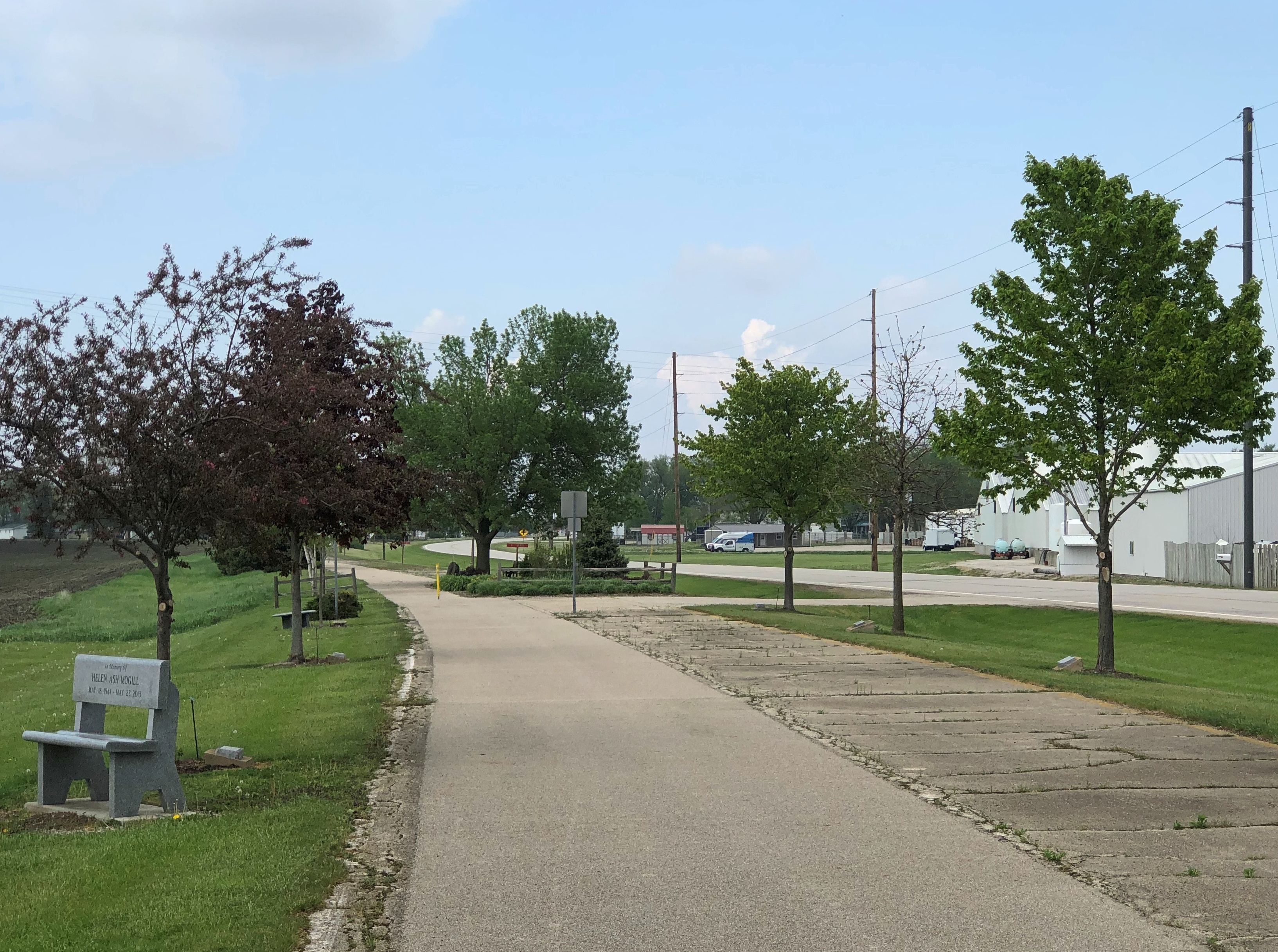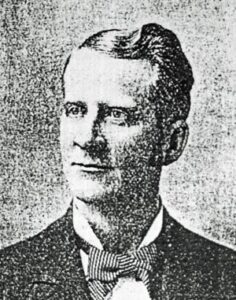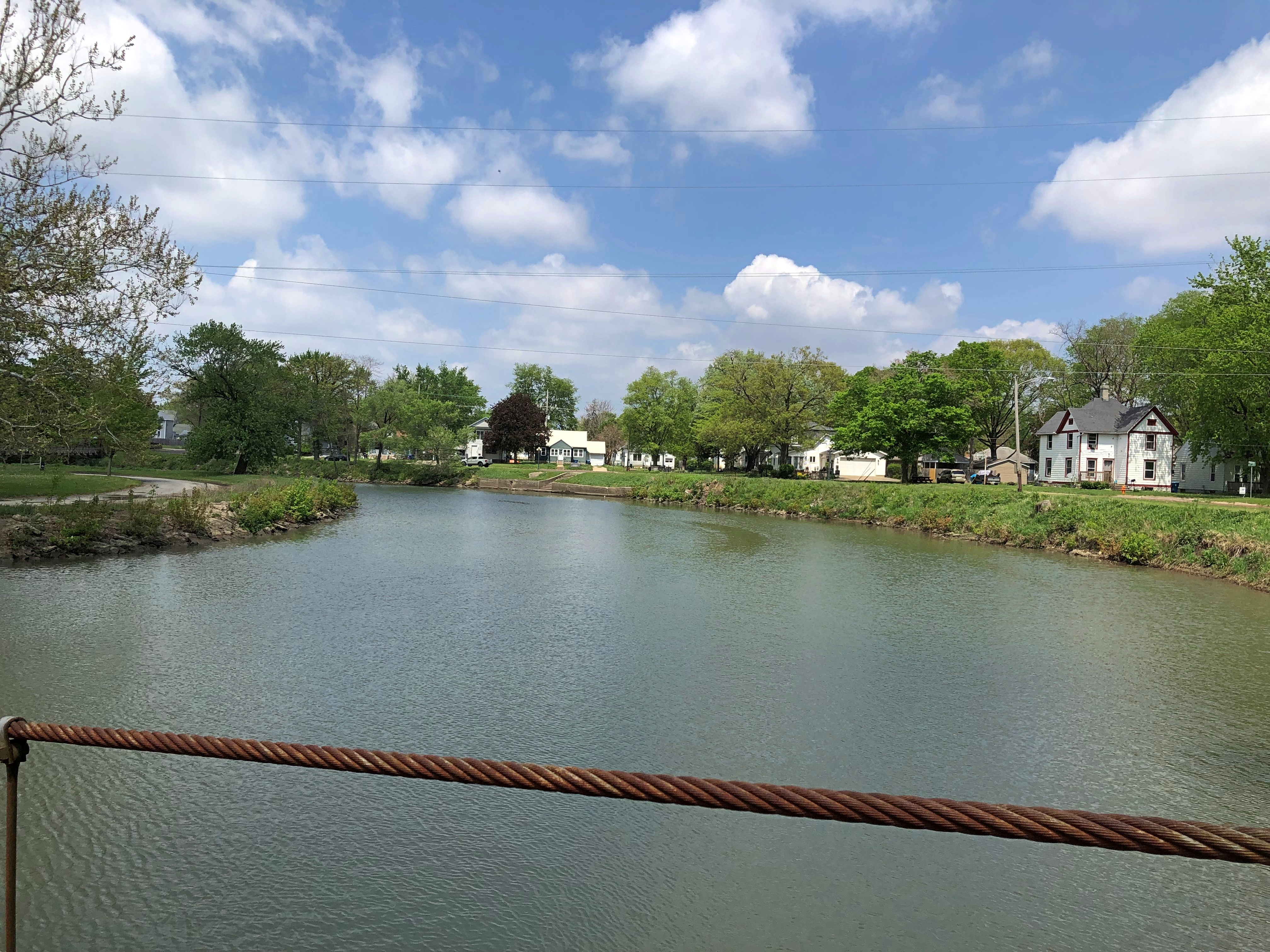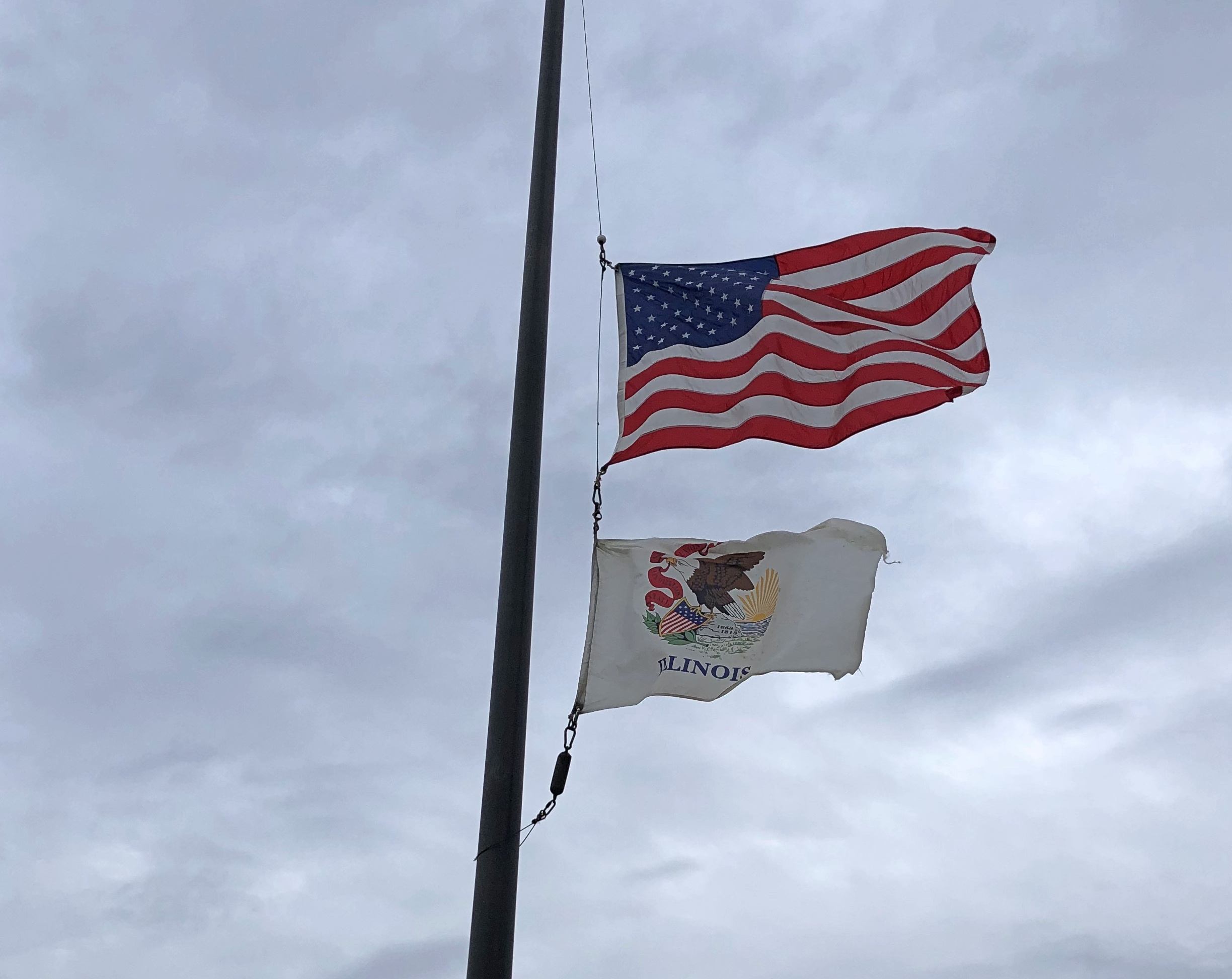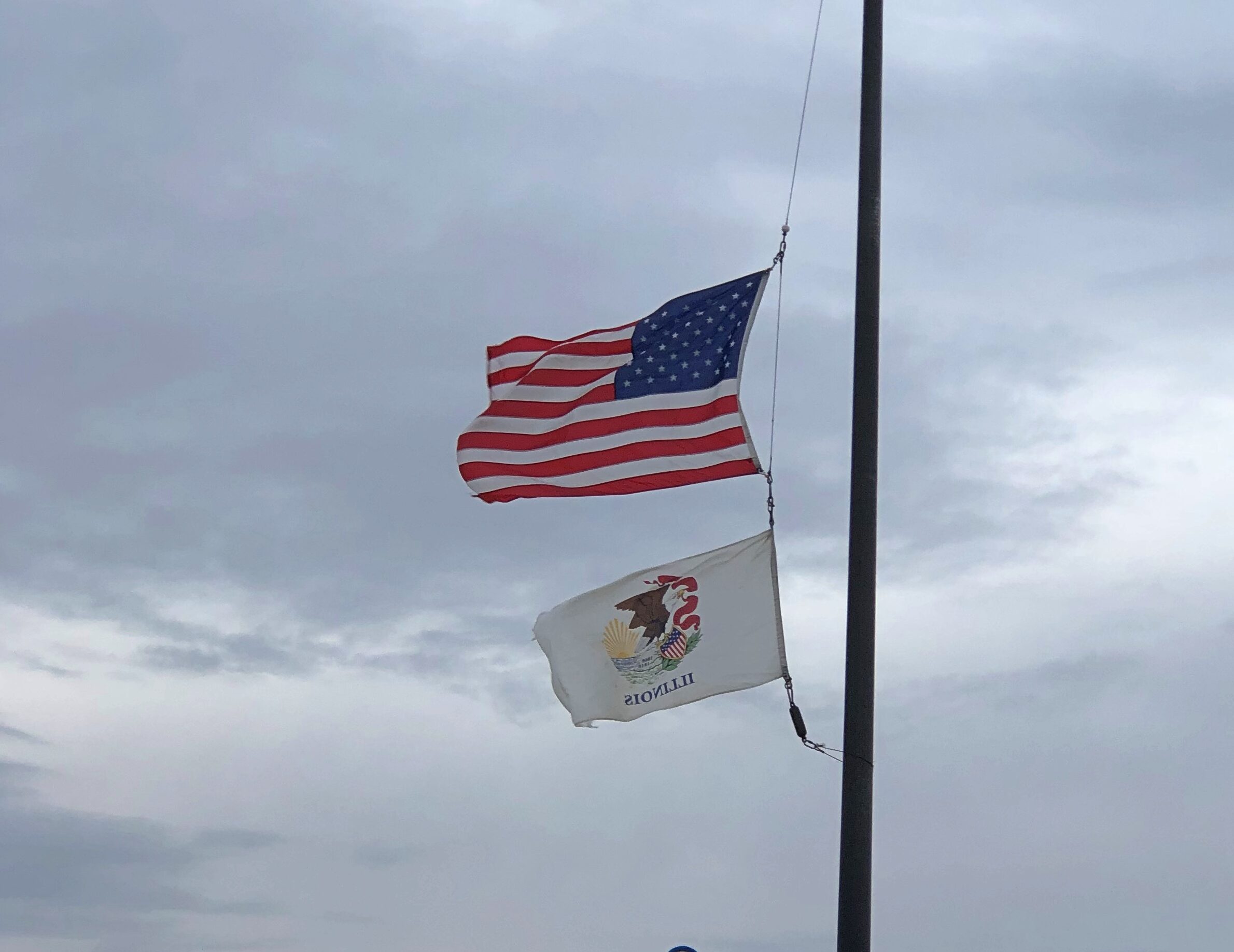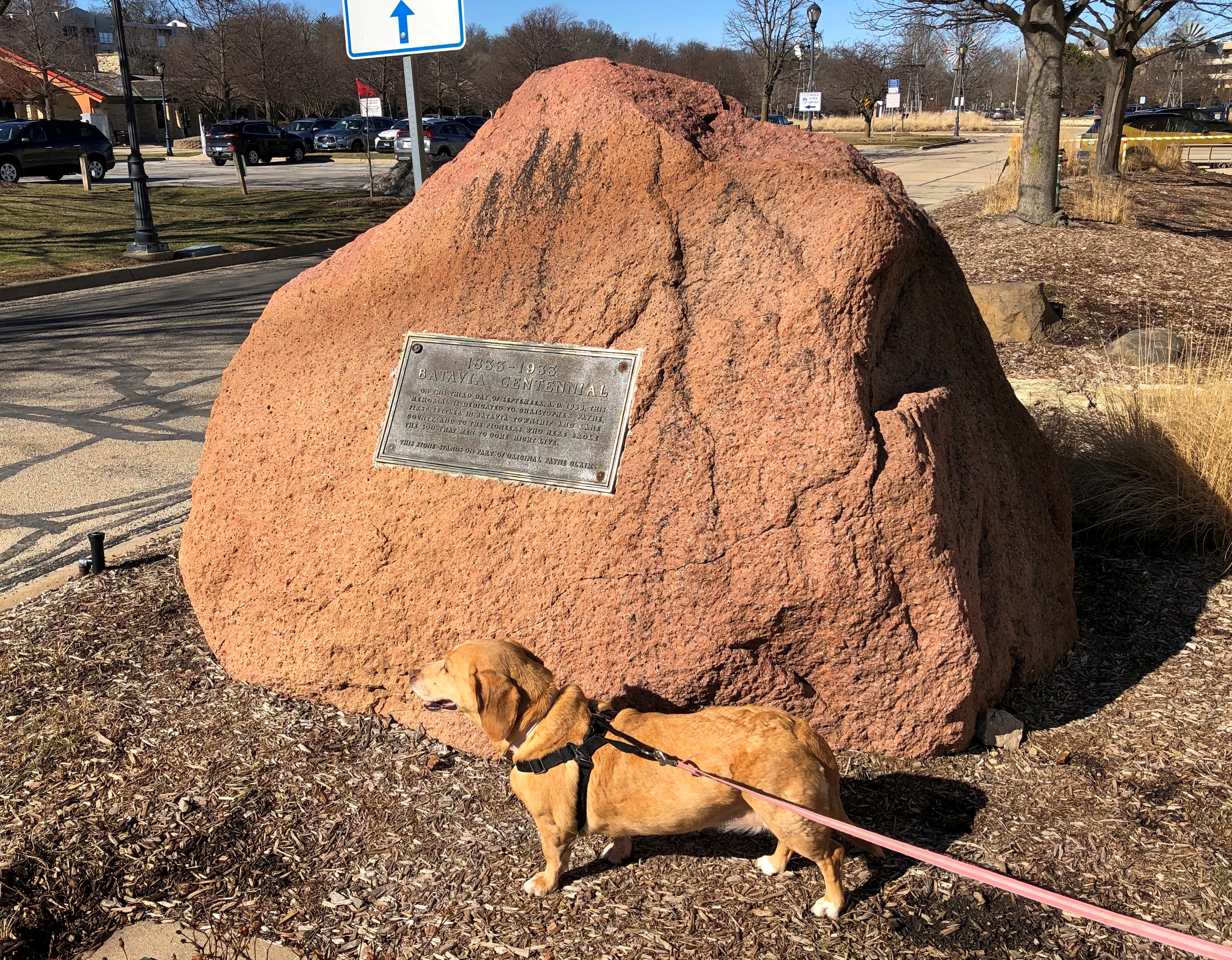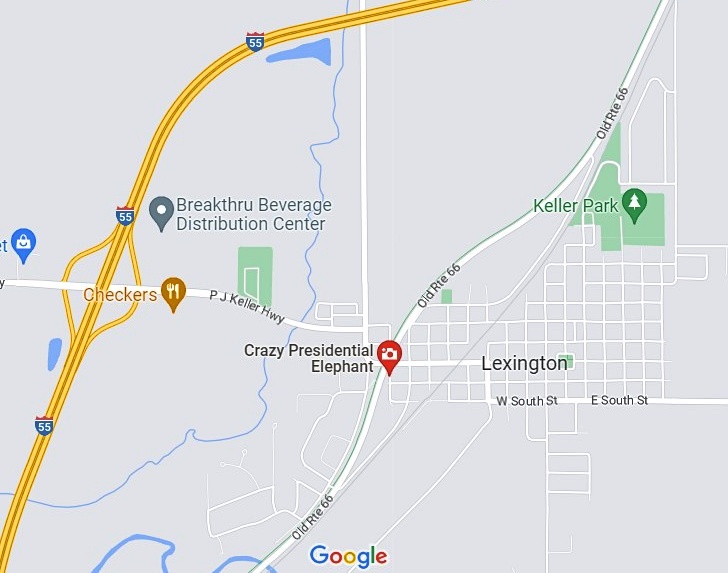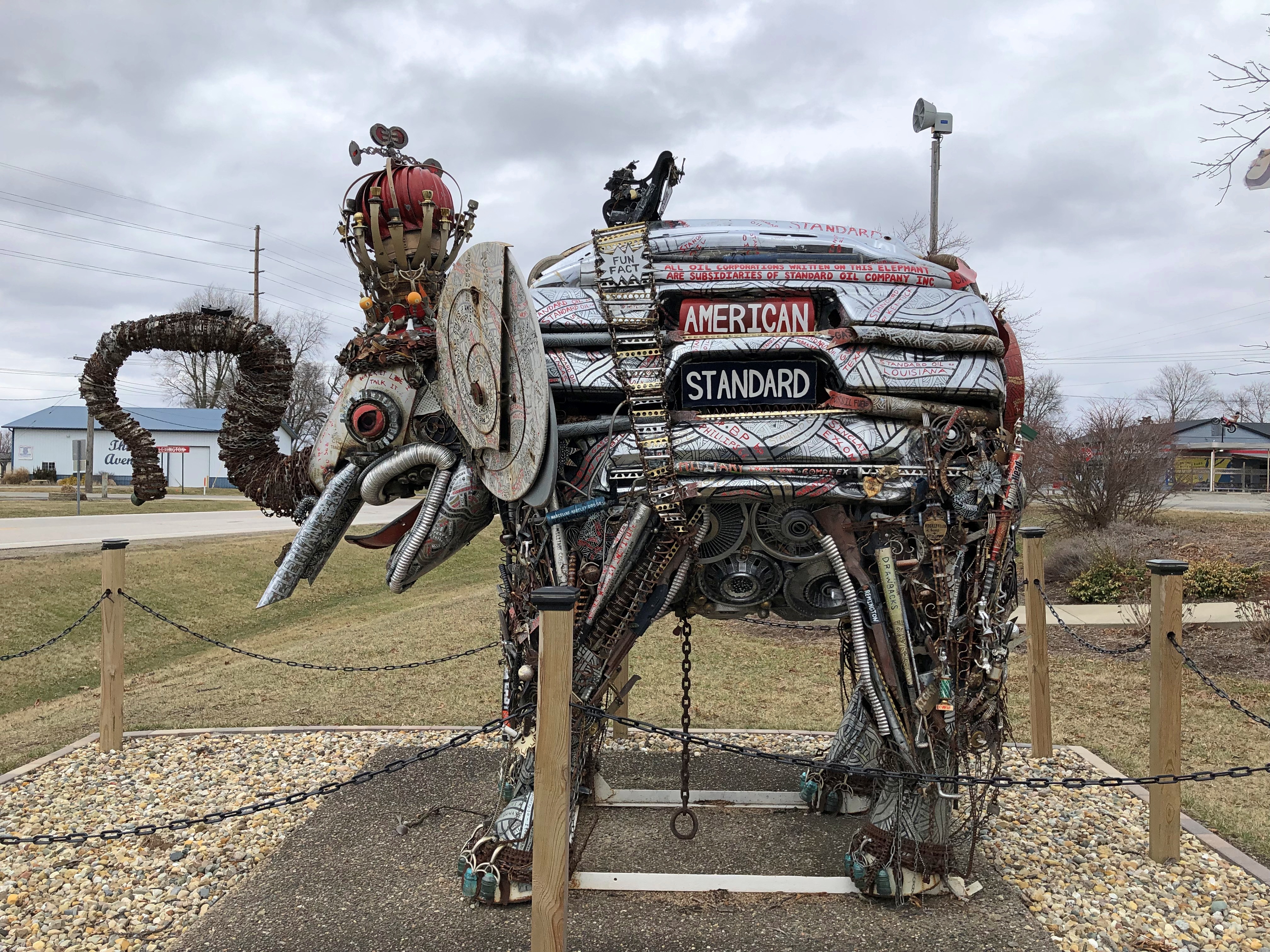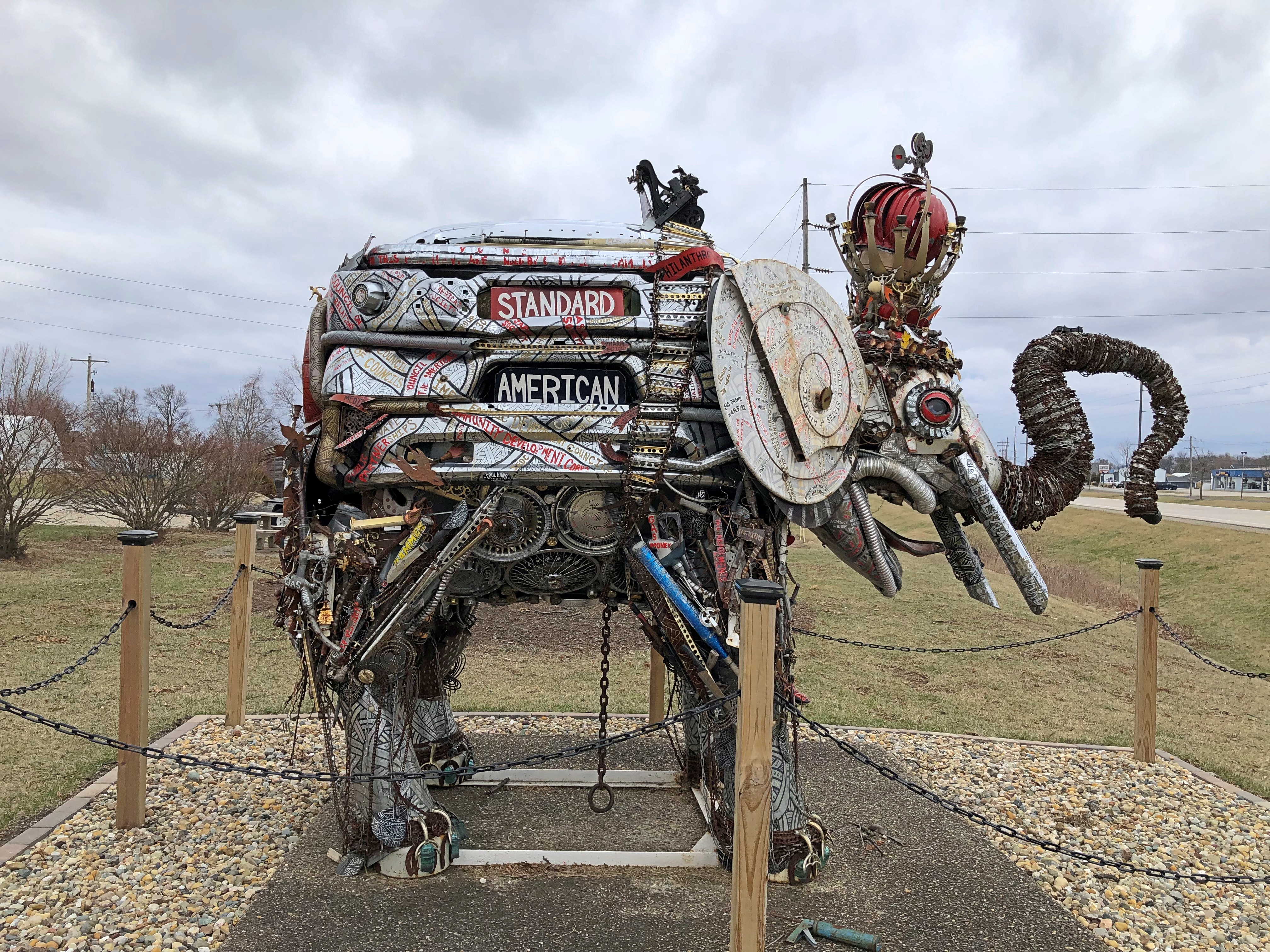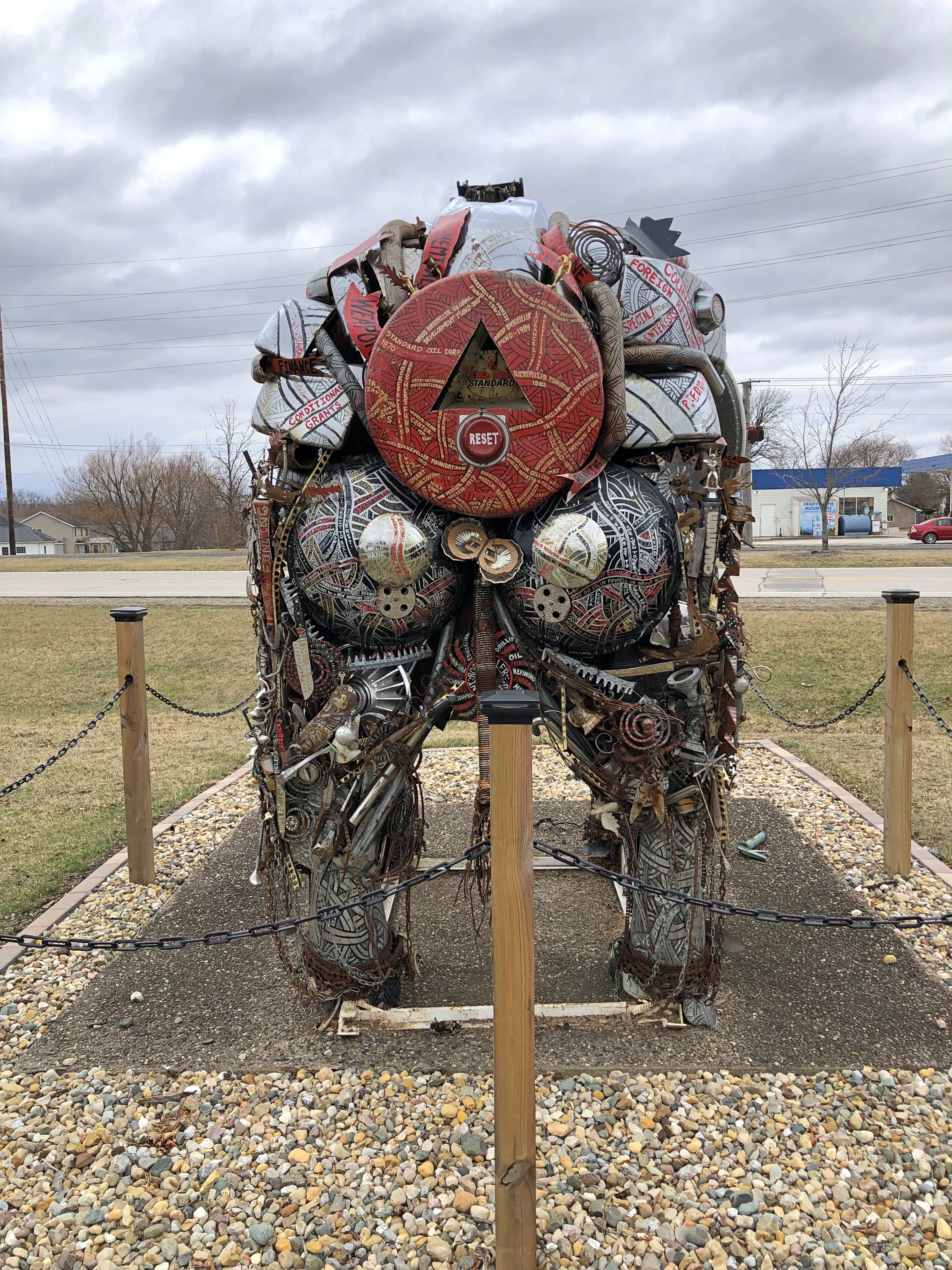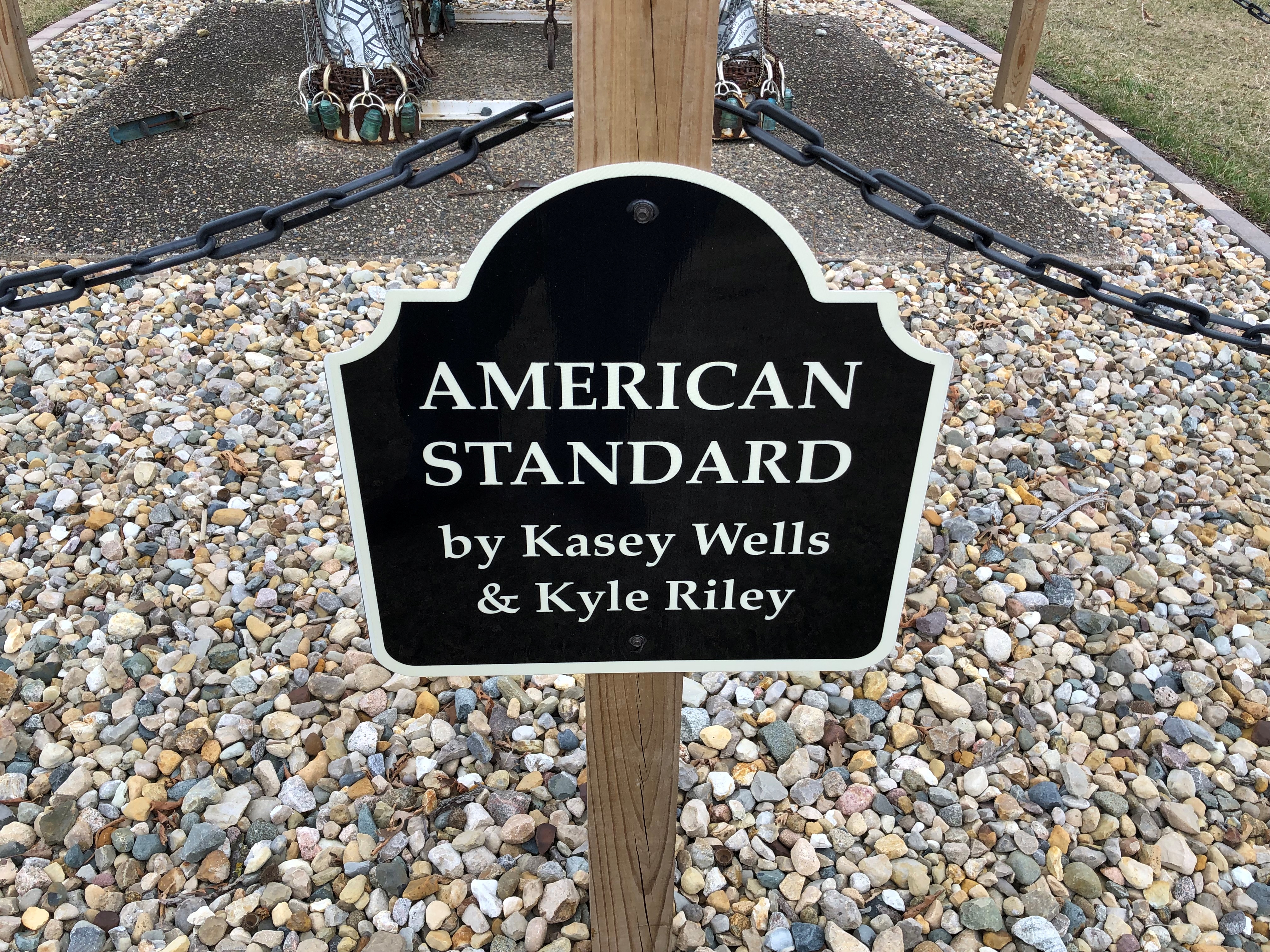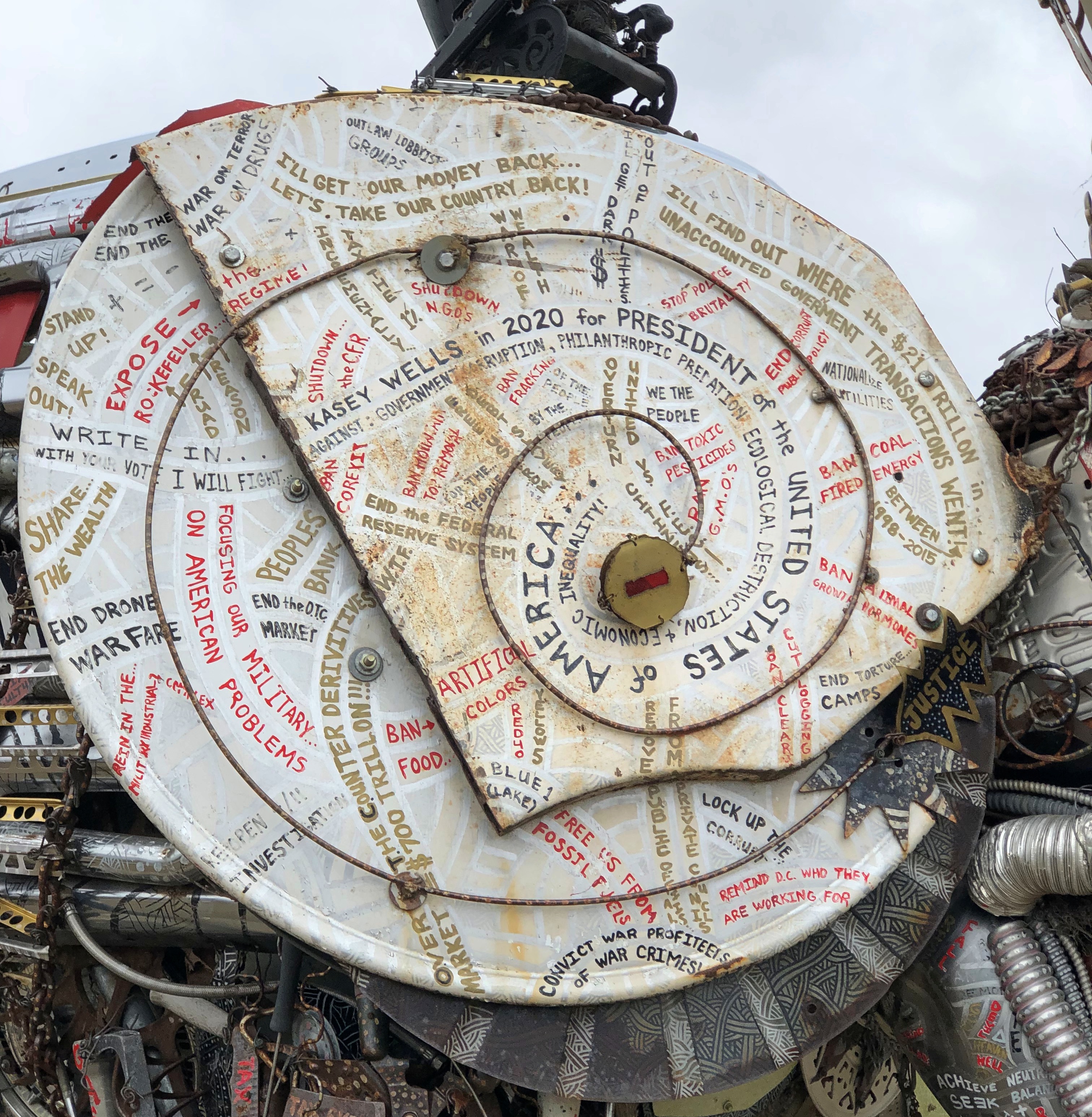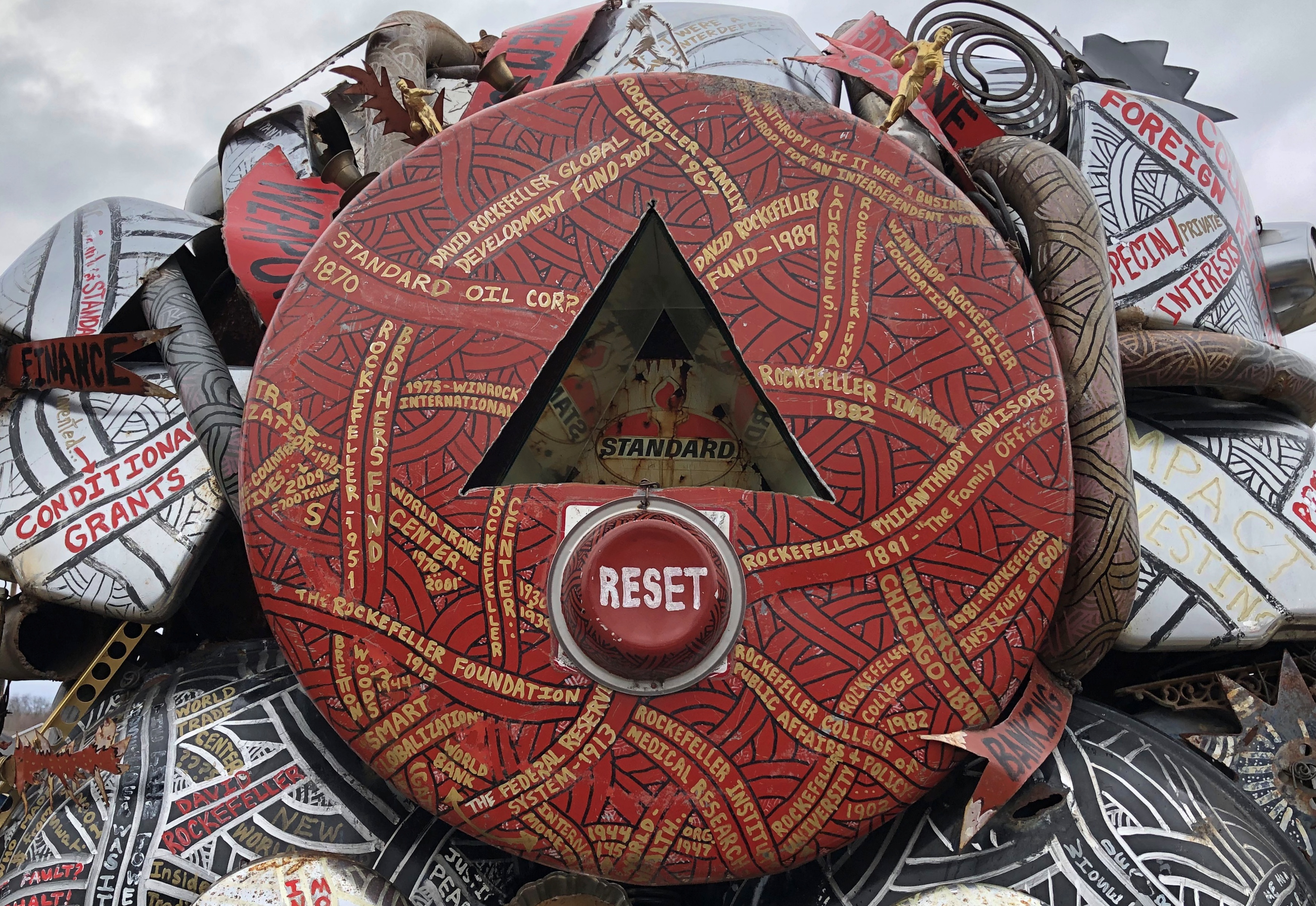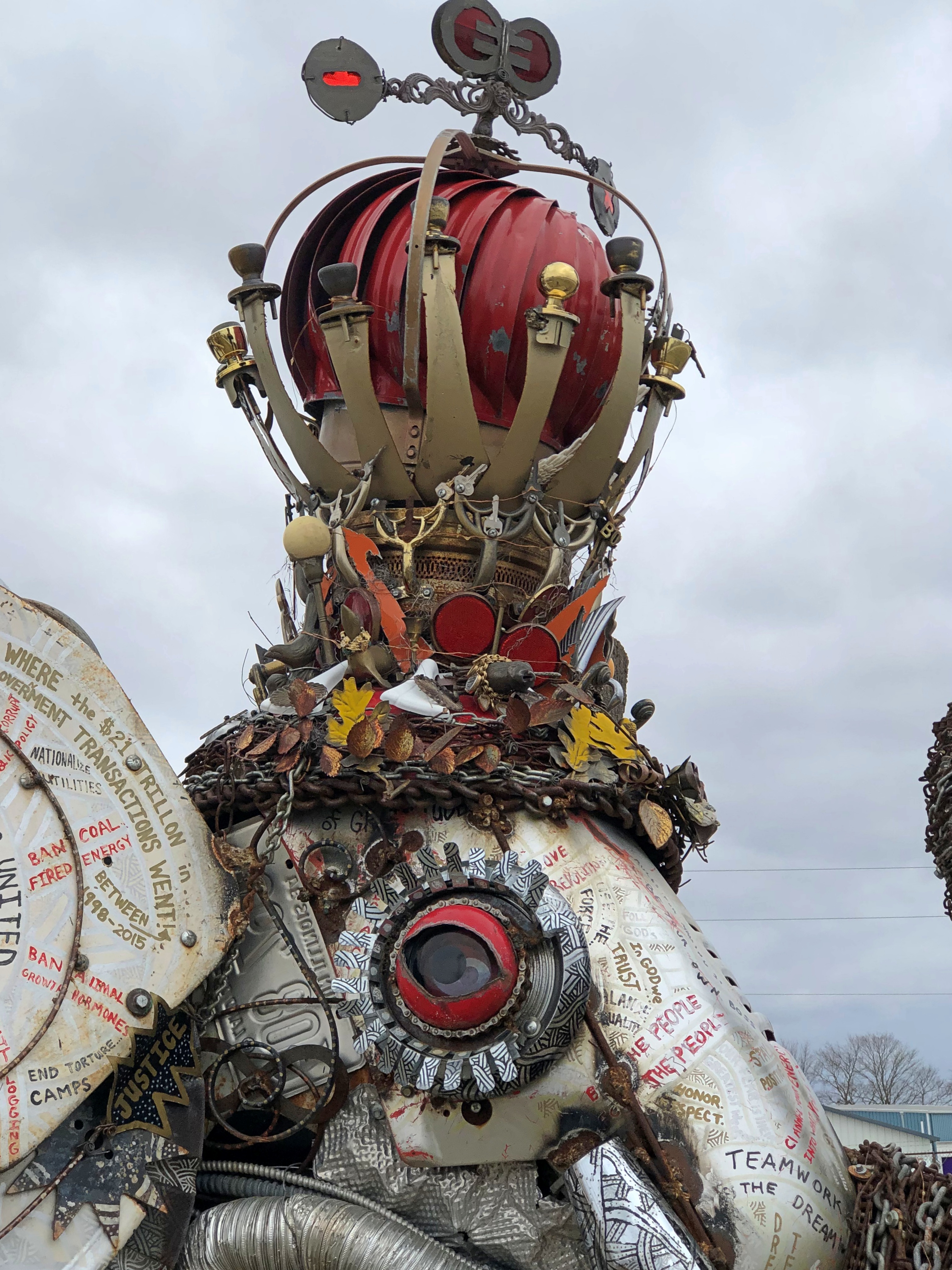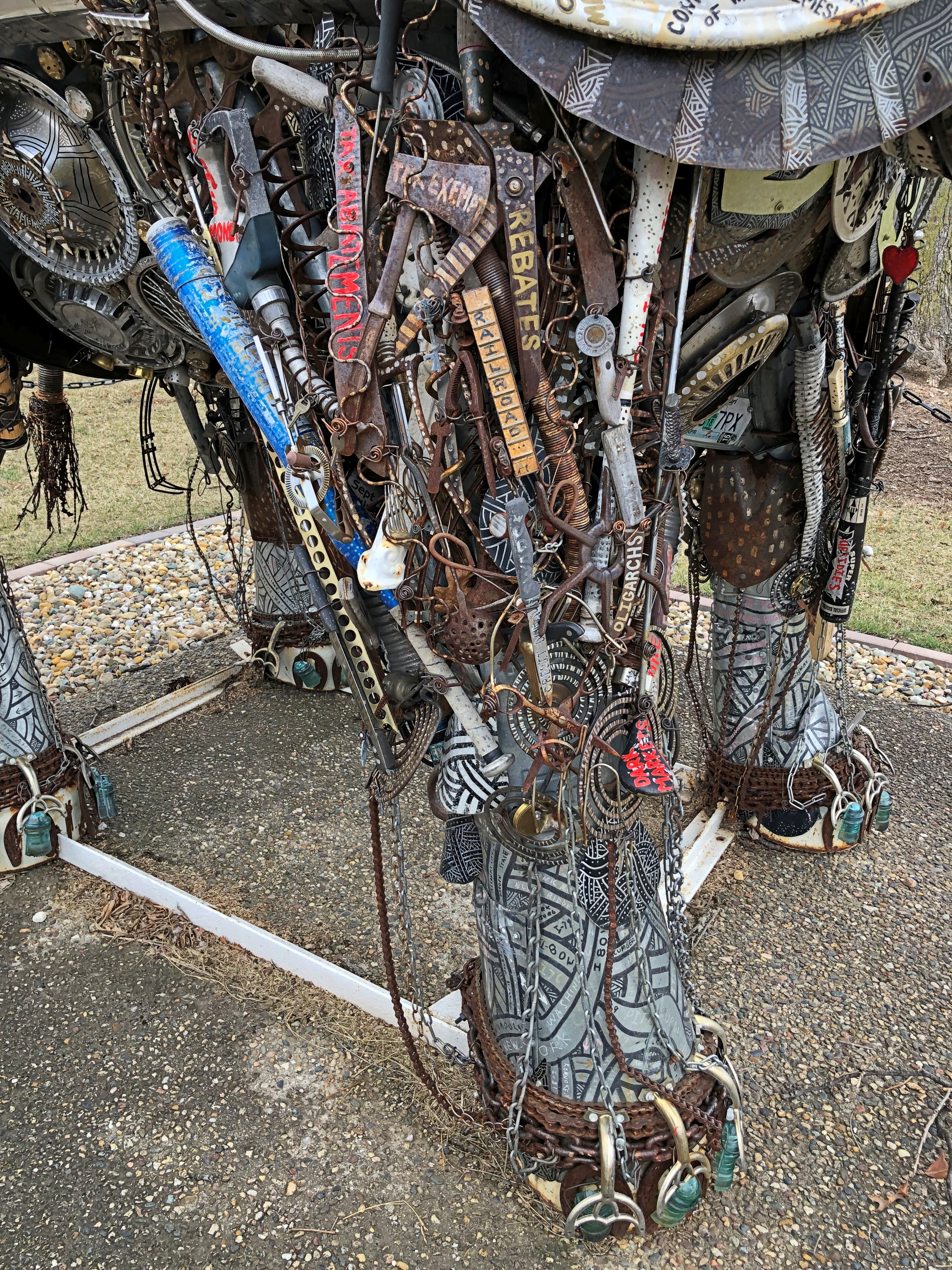Years ago, as I crossed a pedestrian bridge in Shanghai, a young man with construction paper and scissors paralleled me across. Out of the corner of my eye, I could see he was trimming the paper quickly as we walked, and toward the end of the bridge, he showed me the result, which he probably wanted to sell me: my silhouette in black paper.
I only glanced at it for a moment before brushing him off. Yuriko saw it too, and not long after, she said, “That was pretty good.” I agreed, he’d captured my outline during those seconds on foot in a moderate crowd of other people. I should have bought it, I realized, since it would have made an absolutely unique souvenir. Unless of course Shanghai is a hotbed of silhouette artists with roots in Ming dynasty aesthetics or some such, but somehow I doubt it.
No, I think it was just that talented guy. He came to mind when we spotted a couple of silhouettes in metal next to the street in Joliet, not far from the Rialto Square Theatre.
I didn’t need a sign to tell me that was Groucho Marx leading the way, and a few second’s examination told me that Harpo followed. Groucho has, or had for earlier generations, a famed silhouette. How many famed silhouettes are there, anyway? More than I probably realize.
A nearby sign said that the Marx Brothers had played the Rialto when it was new in the 1920s. I don’t doubt it for a minute, but wait – where’s Chico? Did the city not have the budget for a complete complement of Marxes? (Zeppo could have been left out, however.)
I had Ann pose in place of Chico.
Sure, Chico’s silhouette might not be as distinctive, though his hat might be. But so what? Those in the know would spot Chico right away, considering the context. There’s no excuse for no Chico. As Chico would have said, “That’s-a no good.”
We’d come to town to see the majorly entertaining Christmas movie Elf at the Rialto.


I knew it was a grand old movie palace. I’d known that for years, but never got around to stepping inside. Just how much of a grand old movie palace we didn’t find out until we entered.

One minute we were in Joliet; the next we stepped into a piece of Versailles, adapted to the needs of early mass entertainment in my grandparents’ time.
“Joliet, Illinois, having a published population of 38,400, today has what is unquestionably the finest motion picture theatre for a city of this size in the country,” crowed the Exhibitors Herald on June 12, 1926. “In fact, the new Rialto Square theatre… is a playhouse which it takes no stretch of the imagination to place on a par with any of the picture palaces of Chicago or New York.
“Further, the Rialto was designed by C. W. & Geo. L. Rapp which makes it a foregone conclusion that it can lack nothing in beauty of appointment or modern comfort.”
The ’20s was a time of boosterism and its prose, but I’m going along with the Exhibitors Herald on this one.

“At the west end of the inner lobby is an arch of mirrors and along the walls between marble pilasters are huge mirrors, eight feet wide and 20 feet high, three on each side. The vaulted ceiling, 45 feet in height, is paneled with figures cast in plaster from clay models made by Gene Romeo, a sculptor.”
The theater itself is certainly grand, too, but not quite like the inner lobby.

A theater organist expertly ran through a Christmas song medley in the minutes before the screening.
When the time came, the organ and organist slowly disappeared, as a mechanism lowered them past sight of the audience, level with the orchestra pit. Nice organ. Aural icing on the lavish visual cake of the theater.
I couldn’t find a fitting Chico quote to laud the Rialto, so I’m making one up: “Atsa-some theater, eh boss?”






































